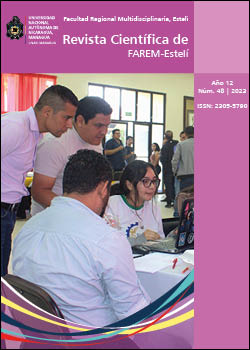Challenges of an inclusive education in the formation processes of university students at the University of the Autonomous Regions of the Caribbean Coast of Nicaragua (URACCAN) Bluefields Campus
DOI:
https://doi.org/10.5377/farem.v12i48.17527Keywords:
Access, learning, inclusive education, accessible infrastructure, methodologyAbstract
The human and constitutional right of Nicaraguans to higher education requires an inclusive approach, since these are learning communities that have different characteristics and needs than the traditional ones. On the Caribbean coast alone, to speak of inclusion requires analyzing issues of interculturality, disability, gender, prisoners, indigenous peoples, Afro-descendants, mestizos, languages, cultures, worldviews, quality, pedagogies, methodologies, equity, appropriate teaching-learning methodologies and accessible infrastructures, among others. This research has characterized the challenges of inclusive education in the training processes of university students at the University of the Autonomous Regions of the Caribbean Coast of Nicaragua (URACCAN) Bluefields Campus. This is a qualitative research based on an ethnographic approach where group interviews were conducted with students and observation during the development of classes taught by teachers. The findings of the study show that there are challenges in terms of access to higher education, teaching methodologies, affective learning and accessible infrastructure for an inclusive university coexistence. It is concluded that, there is co-responsibility of the institution and teachers to develop an inclusive education, sensitive to the recognition of differences, diversities and cultural identities for a responsible and sustainable citizenship, inclined towards society, nature and well-being.
Downloads
415
HTML (Español (España)) 21
Published
How to Cite
Issue
Section
License
Copyright (c) 2024 Revista Científica de la FAREM-Estelí

This work is licensed under a Creative Commons Attribution-NonCommercial-ShareAlike 4.0 International License.
© Revista Científica de FAREM-Estelí

